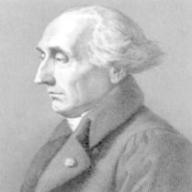根據課本對「功」的定義,「功」是力對距離的累積的物理量。
然而我不能夠理解,一件物體被加熱後,雖然沒有位移,但其內能增加,為何沒有功作用於此物體。
因此維基也說,熱傳導不被認為是做功,因為能量被轉化成了微觀原子的振動而非巨觀的位移。
(http://zh.wikipedia.org/zh-hk/%E4%BD%9C%E5%8A%9F)
我看得出,在物理學對功的定義上,一件物體的內能增加卻沒有功作用於此物體,是沒有矛盾的。
然而我不明白的是,既然作用於一物體的功不包括了物體自身的總能量的改變,它在物理學上有何意義呢?
在此懇請各位物理高手解答本人疑難。
作功的定義與熱傳導
2010-11-26 9:05 pm
回答 (2)
2010-11-26 10:01 pm
✔ 最佳答案
Be aware that the "work" (功) so defined is the "mechanical work"(機械功) as it involves a force and its displacement.Heat absorbed by an object is not mechanical work. It is only an energy transfer. An object could obtain energy from lots of ways, mechanical work done is only one of them.
In the microscopic view, in the absorption of energy, molecules in the object actually do "work" against intermolecular force in order to increase their separation. Thus the increase of internal energy does inovlve the "work" concept.
Lastly, do not confuse with the "heat conduction"(熱傳導) so mentioned with heat absorption. The latter leads to an increase of internal energy.
2010-11-26 11:07 pm
經過一番思考,我得出了一個結論。我認為自己的思路錯了。
解釋如下:
第一:
在絕熱過程中,我們能夠作功使一物體的內能增加;
在宏觀情況下,我們一般都能夠作功使一物體的機械能增加。
因此我們能夠作功使一物體的內能和機械能增加。
第二:
在準靜態過程中,熱傳導使氣體膨脹,所以熱傳導能夠簡接作功於一物體並使之機械能增加;
在微觀情況下,熱傳導一般都能夠使一物體的內能增加。
因此熱傳導能夠使一物體的內能和機械能增加。
結論:
熱傳導和作功分別是兩種不同的形式,使到一物體的內能或機械能改變。
順帶一提,我認為熱傳導是微觀上對物體的作功。
解釋如下:
第一:
在絕熱過程中,我們能夠作功使一物體的內能增加;
在宏觀情況下,我們一般都能夠作功使一物體的機械能增加。
因此我們能夠作功使一物體的內能和機械能增加。
第二:
在準靜態過程中,熱傳導使氣體膨脹,所以熱傳導能夠簡接作功於一物體並使之機械能增加;
在微觀情況下,熱傳導一般都能夠使一物體的內能增加。
因此熱傳導能夠使一物體的內能和機械能增加。
結論:
熱傳導和作功分別是兩種不同的形式,使到一物體的內能或機械能改變。
順帶一提,我認為熱傳導是微觀上對物體的作功。
收錄日期: 2021-04-29 17:37:06
原文連結 [永久失效]:
https://hk.answers.yahoo.com/question/index?qid=20101126000051KK00408

